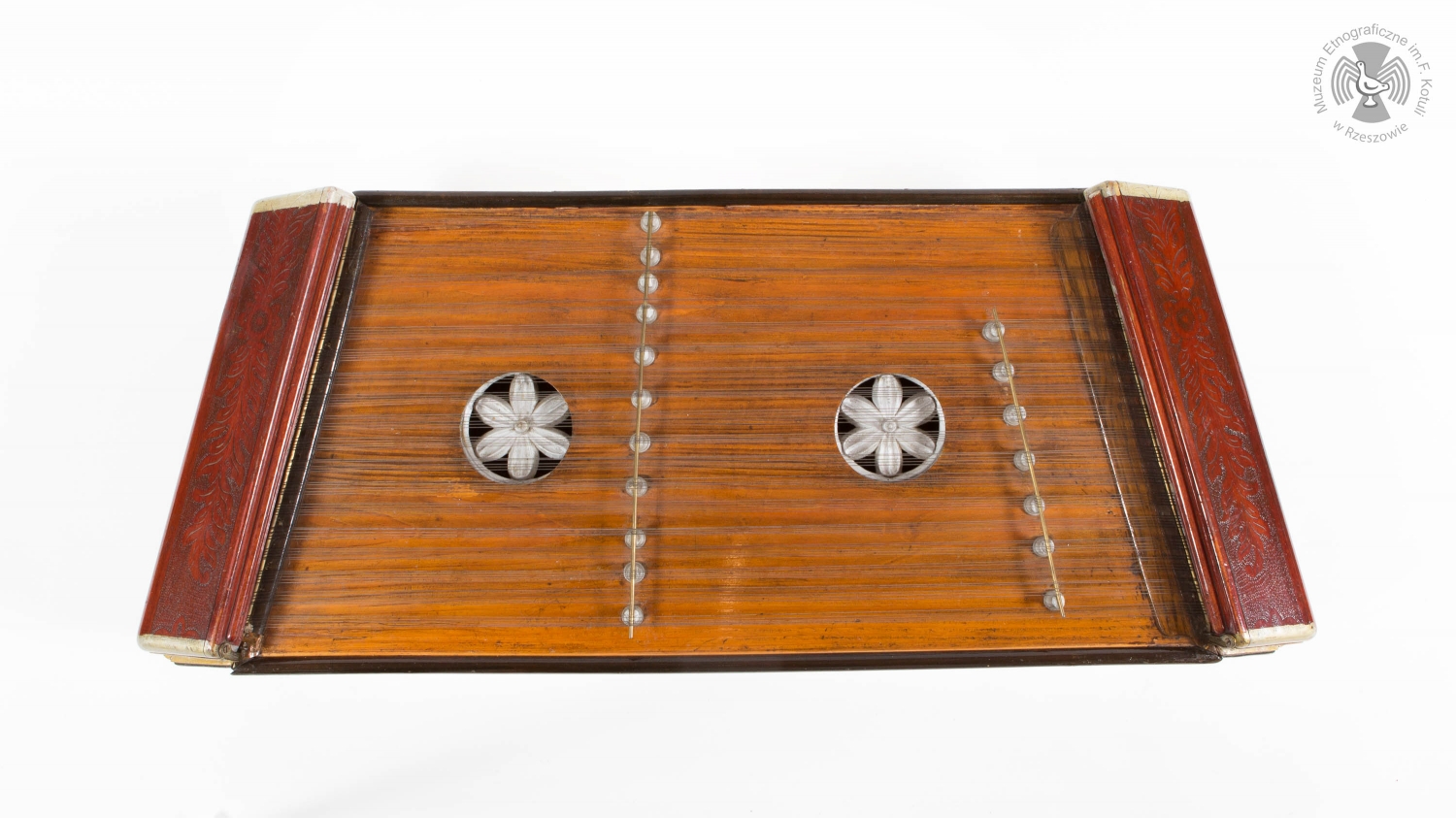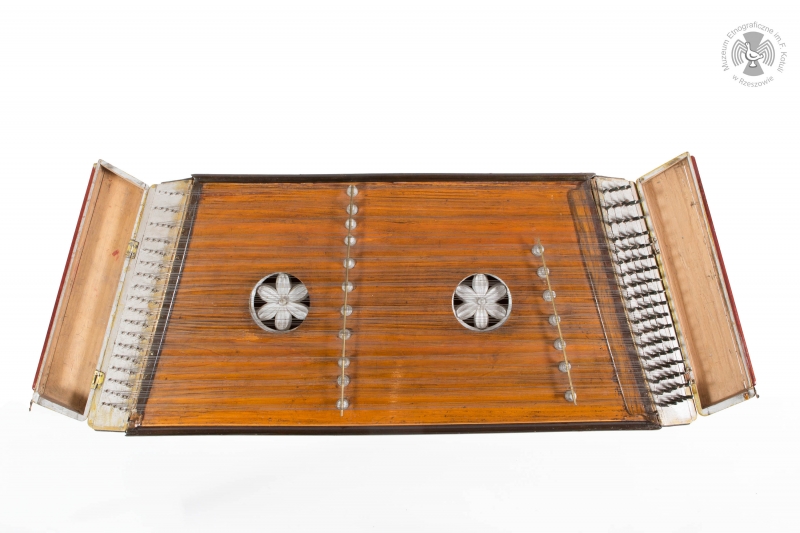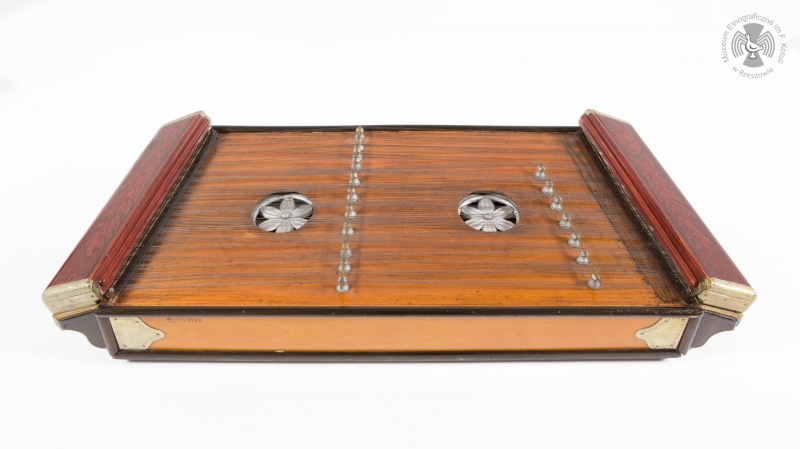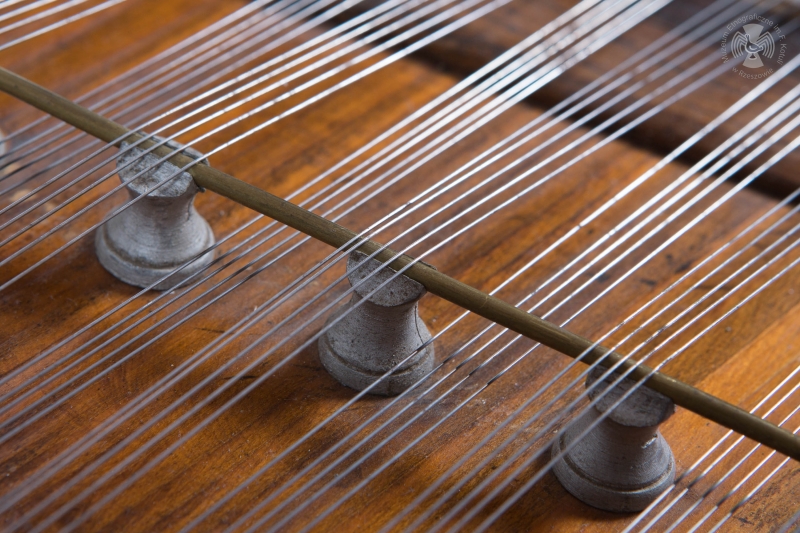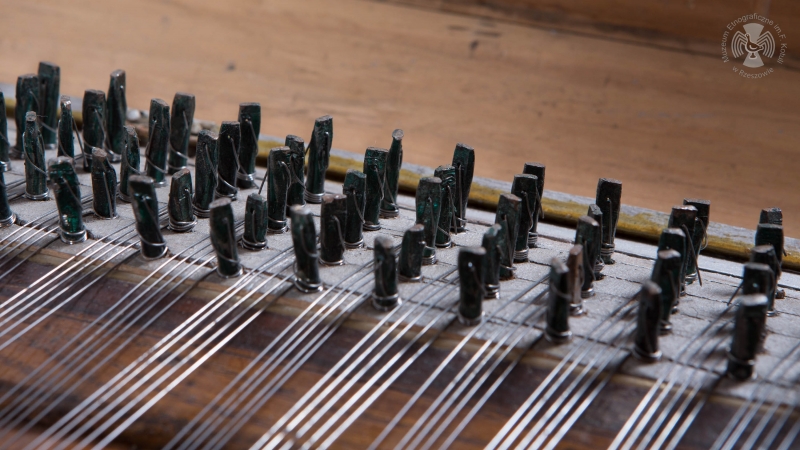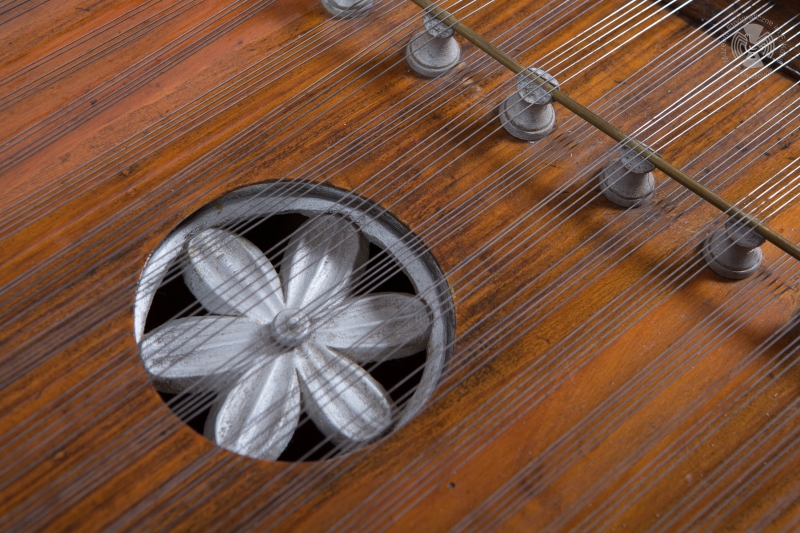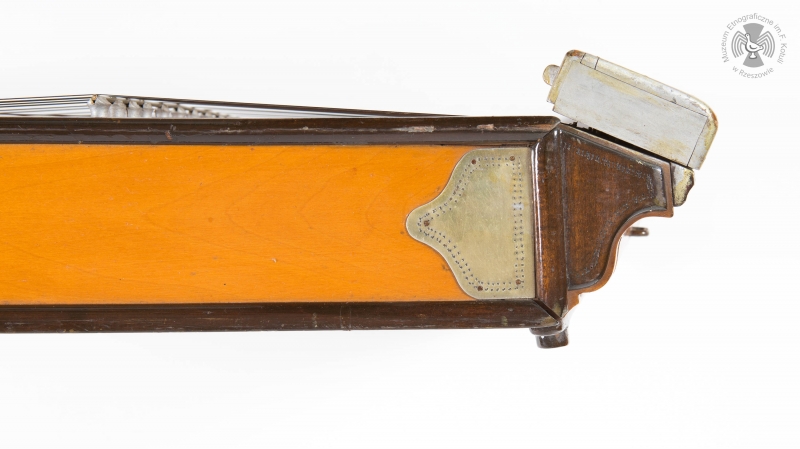dulcimer
Excerpt from the film Siła tradycji [The Power of Tradition], produced as part of the project "Muzyczny folklor Podkarpacia - badania terenowe" [The Musical Folklore of Subcarpathia - Field Studies], Franciszek Kotula Ethnographic Museum in Rzeszów, 2014
dulcimer
Classification: 3 Chordophones / 31 Simple chordophones or zithers / 314 Board zithers / 314.1 True board zithers / 314.12 With resonator / 314.122 With resonator box (box zither) / 314.122-4 True board zithers with resonator box (box zither) sounded by hammers or beatersMaker: Muras Józef
Date: 1981
Village / Town: Bachórz
Region: Subcarpathia
Country: Poland
Owner: Franciszek Kotula Ethnographic Museum in Rzeszów
Inventory number: MRE 8073
Description: body in a trapezoid shape with moulded sides; respective components of the instruments connected using metal nails and wooden bolts; edges upholstered with semicircular batten; two resonance holes on the top plate; 18 string courses: 5 strings in each course, stretched between metal hitches and pegs (for tuning), supported by two uneven rows of single wooden bridges (11 and 7), each with a metal bar attached on top; some melody strings stretched interchangeably with bass strings; melodic strings divided by bridges in a 2:3 ratio, due to which their left sections are pitched a fifth higher than their right sections; undivided bass strings; two covers on the top plate to shield hitches and pegs from damaging; hitches on both sides of the instrument to attach a strap to allow the musician to suspend the dulcimer on their neck while playing in a standing position; back plate equipped with wooden legs
Decoration: edge battens coated with dark brown paint; sides, top plate and bottom plate stained brown and coated with neutral varnish; sides of the instrument, covers shielding the hitches and pegs stained in cherry colour and decorated with floral engravings; resonance holes decorated with rosettes shaped as flowers; rosettes and bridges painted silver; metal fittings on the sides of the body
Measurements: 770 x 960 x 400 x 115 mm
Materials: wood, metal
Sound compass, tuning: variable, usually the lowest tone G – d, scale: from two (sometimes incomplete) to over four octaves
Performance practice: formerly an instrument of Jewish and Romany musicians, later folk musicians; it was played solo or in bands, particularly in the Vilnius area, Rzeszów area, and in Subcarpathia, where the dulcimer became the musical hallmark of the region after World War II; dulcimers from the eastern part of Lesser Poland are usually bigger and louder than those from the Vilnius area
Catalog card by: Jolanta Pękacz / Zbigniew J. Przerembski
<< Back

